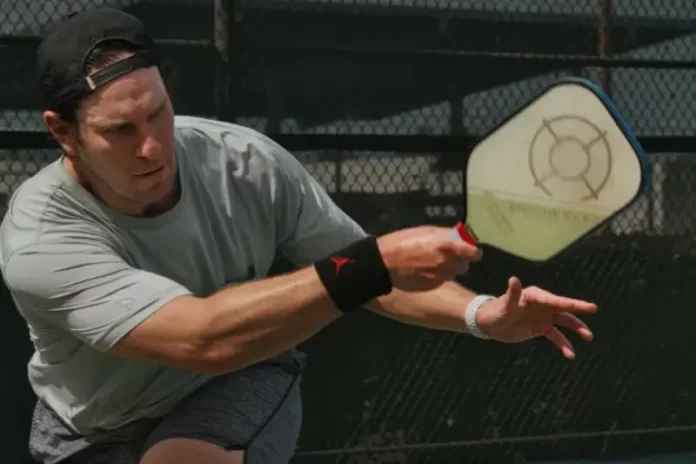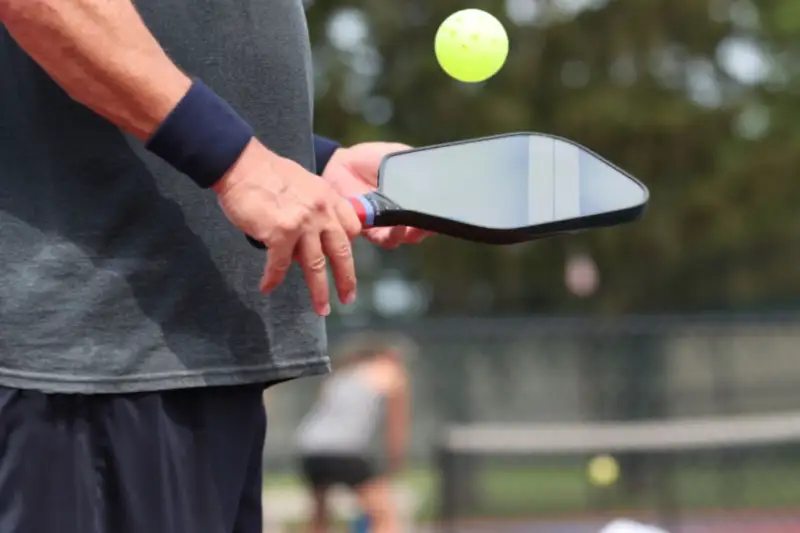Is Pickleball the Future of Fitness: In recent years, pickleball has seen an extraordinary rise in popularity across the United States. According to the Sports & Fitness Industry Association, more than 13.6 million people played pickleball in 2023, marking an astonishing 85.7% increase from the previous year. This surge in participation is attributed to the sport’s accessibility, attracting players from various age groups. Initially favored by older adults, the average age of pickleball players has decreased, showing its growing appeal among younger demographics.
The COVID-19 pandemic played a significant role in accelerating pickleball’s popularity. As a socially distanced activity, it allowed individuals to stay active while maintaining social connections. Cities nationwide have responded to this demand by converting tennis and basketball courts into dedicated pickleball venues. This shift has led to a 159% increase in participation from 2019 to 2022, making pickleball the fastest-growing sport in the country.
The broad demographic appeal of pickleball, combined with its unique blend of fitness and social interaction, makes it an inviting option for players of all ages. Families, friends, and competitive players are drawn to the game, creating a community that continues to expand. This growth lays the groundwork for significant opportunities in the pickleball industry, particularly for franchise development.
Emerging Pickleball Franchises
As interest in pickleball surges, the franchise landscape is rapidly changing. In just the past two years, eight new franchise brands have emerged, fueled by robust consumer demand and a variety of business models. FRANdata has noted that these brands present exciting opportunities for franchisees, with a remarkable growth trajectory and diverse revenue models.
The emerging franchises are confident in their growth potential, with plans to add over 1,000 units in the next couple of years. Brands like Ace Pickleball and The Picklr are actively recruiting franchisees from established companies, reflecting a trend toward attracting experienced operators. For instance, Ace Pickleball has already signed up 24 franchisees to open 86 locations, showcasing the strong investor confidence in this booming market.
This dynamic growth presents a lucrative opportunity for multi-unit franchisees looking to capitalize on the pickleball craze. With the sport’s appeal reaching new audiences, investors are eager to explore the potential of establishing dedicated pickleball clubs or integrated entertainment venues that cater to players and spectators.
Choosing the Right Business Model: Court-Focused vs. Entertainment-Driven
Franchise opportunities in pickleball generally fall into two primary business models: court-focused and entertainment-driven. Understanding these models is crucial for potential franchisees to determine which aligns best with their goals and market strategies.
The court-focused model prioritizes sports and fitness fans by maximizing court occupancy. Facilities typically feature eight to 15 pickleball courts, with revenue generated through membership fees and pay-per-use options. Brands like Ace Pickleball show this model, offering limited food and beverage services while focusing primarily on the sport. This approach allows for rapid national expansion and provides recurring revenue streams, similar to established fitness concepts.
On the other hand, the entertainment-driven model integrates food, beverages, and other recreational activities alongside pickleball. Brands such as PKL and Crush Yard operate under this model, providing a unique dining and entertainment experience. While this approach offers a diversified revenue stream, it also requires greater expertise from franchisees to manage fitness and food-service operations effectively.
News in Brief: Is Pickleball the Future of Fitness
The pickleball industry presents an exciting scene for players, teams, organizations, and potential investors. With its rapid growth, increasing participation rates, and emerging franchise opportunities, there has never been a better time to engage with this dynamic sport. Whether through dedicated pickleball clubs or entertainment-focused venues, the potential for success in the pickleball market seems immense.
ALSO READ: Advancements in Pickleball Paddle Testing: A Step Toward Integrity in the Sport


